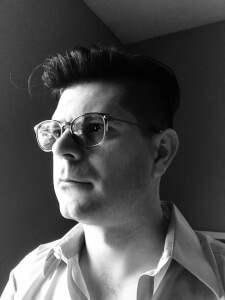In this presentation, I would like to follow two colluding trends from the field of AI and biotech: Life is considered increasingly machine-like, and technology is considered increasingly life-like. Either with reductionist or bottom-up approaches, biotechnologies prefer the constructionist paradigm about Life. To be able to construct from biological parts, Life needs to be reduced and standardized. This standardization is drawing a line behind a certain level of understanding of Life in biological sciences. Life is becoming a black box. By the same token, AI software is becoming a black box because its computational processes are becoming increasingly opaque. As both black-boxed technologies are becoming progressively more intertwined into bioengineering infrastructures—such as Computer-Aided Design (CAD) of biological parts and Computer-Aided Manufacturing (CAM) of biological parts—a new and pressing question emerges: What are the ethics that operate under such black-boxed entanglement of organic Life and technology? Ethics is defined by ontology There is no cultural critique—or language—yet to talk about both--ontologies and ethics of these new organisms or to describe them. Dark Design—method of artistic and design critique I am proposing—is attempting to start a conversation about this language.
The question of ethics for these new organisms and their manufacturing process is of utmost importance because these technologies are redefining paradigms about science, Life, and the world. What will happen if humans lose insight into scientific thinking and relegate their responsibility to machines? How do we know what the goals of opaque machines that create these opaque organisms are? How do they compare—and have the potential to change—Life and the ecosystem as we know it? The appropriate time to influence or reconsider new paradigms is at the time of their emergence.
In terms of materiality, a CAM/CAD biotechnological tool is an entanglement of elements of the software, mechanical parts, and living biological material. To evaluate this design tool I will use methods from media studies (biomedia and cyborg), Thacker’s critique of the ontology of Life and ethics (human bioethics vs. nonhuman bio-ethics), bioart (cultural and ethical analysis of the mechanistic vision of Life, aesthetics of disappointment), biodesign (biological construction method: top-down vs. bottom-up), analytical design methods from design noir, critical design, metadesign, and contestable design. I will be looking at methods of reading code developed in Critical Code Studies, Digital Humanities, and Esoteric Software Languages. I will also create a critique of correlationism that Eugene Thacker identified in bioethics. I will recognize his analysis even in the fields of machine ethics and explainable AI. Another critique is related to how science and technology deal with the ontology of biological Life as a medium.
Most importantly, Dark Design aims to critique the engineering paradigm about the world and how it works. This paradigm is the source of all constructionist and mechanistic ideas about Life, biological sciences, biodesign, machines, computer code, and models. It is closely related to what Haraway identifies as a material-semiotic view of objects and living beings.
Back






